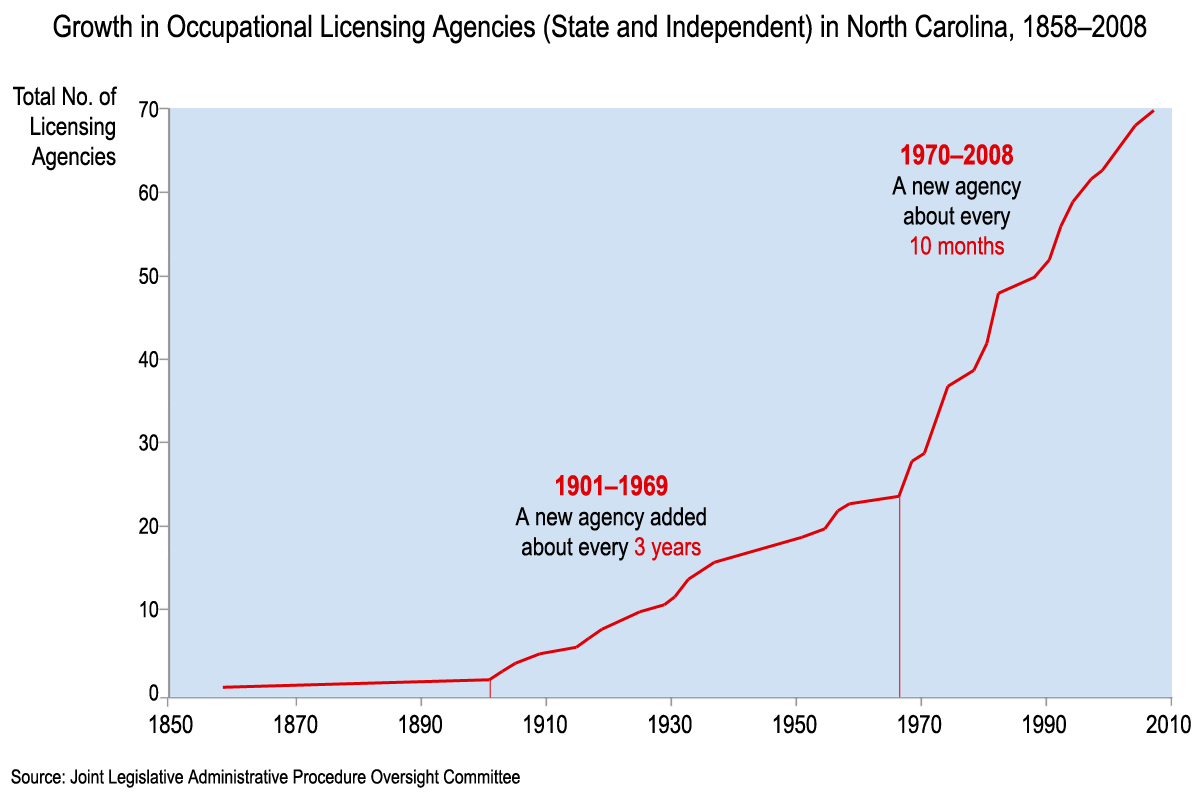So far in this series I have looked at the first two findings given in support of the legislation: the right to earn a living is a fundamental civil right, and access to this right is a time-honored, well-known path up from poverty.
The third finding begins to hone in on what infringes on this civil right: occupational licensing. It challenges the scope and unintended consequence of licensing and suggests it is a growing problem.
This finding also introduces by implication two separate ideas: (1) the public purpose behind this entry regulation can be legitimate, or (2) the entry regulation and consequent reduced competition can be arbitrary. It states:
In recent years, many regulations of entry into businesses and professions have exceeded legitimate public purposes and have had the effect of arbitrarily limiting entry and reducing competition.
There are several moving parts to this finding. How do we know whether the licensing serves a legitimate public purpose, as opposed to an arbitrary one? The phrase “In recent years” strongly suggests the answer likely has to be inferred.
Defining the precise threshold for when the public purpose served by licensing is “legitimate” seems impossible. It’s a candidate for sounding like Justice Potter Stewart and claiming to “know it when I see it.” Any particular industry lobby’s assertion that a license in its field is necessary to protect consumers from poor practitioners could have traction with some legislature. On the other hand, Nobel Prize–winning economist Milton Friedman argued against all occupational licensing, making the case against even medical licenses before the Mayo Clinic.
States disagree widely over what occupations even need licensing
All 50 state governments, however, have decided to subject some occupations within their borders to licensing. Collectively, however, they have licensed very few of the same occupations. Inference: very few occupations actually appear to require licensing.
How few? Writing for the Council of State Governments’ 2004 Book of the States, Pam Brinegar identified “more than 1,100” regulated professions — but only “fewer than 60” regulated in all 50 states. That’s just over 5 percent.
What about the remaining 95 percent? There are significant differences among the states as to whether they should be licensed at all. And even in states where they are licensed, there are critical differences over how strictly they should be regulated.
Furthermore, those obvious (“know it when I see it”) licensing needs were in all likelihood addressed by licensing a long time ago. The more recent the license, the more likely it is arbitrary — a product of successful lobbying rather than a crying need.
Consider that in 1952, the Council of State Governments was warning of the “extraordinary increase in state legislation requiring government examination and licensure.” How many occupations were affected then, 66 years ago? Only 75 occupations. Of those, just 14 (nearly 19 percent) were licensed by all the states.
At that time, in North Carolina, the state was adding a new licensing agency about every three years. Policymakers grew much more aggressive in regulating occupations, however. From 1970 to 2008, they were adding a new licensing agency about every 10 months. It is difficult to think legislators were discovering a new, clear-cut case for extreme state regulation of an occupation every 10 months for nearly four decades.

Also, those new occupational licensing boards were responsible for many more new licenses.
If the licensure isn’t meeting a legitimate public policy need, then it is arbitrary. So for no good reason it is, as the third finding states, “limiting entry and reducing competition.”
That’s a topic for the next entry.
Posts examining the Right to Earn a Living Act:
Part 1: A fundamental civil right
Part 2: A well-known path up from poverty
Part 3: Legitimate vs. arbitrary regulation
Part 4: Fewer jobs, higher prices
Part 5: Greater burden for poor workers and consumers
Part 6: Three main objectives
Part 7: Defining the terms
Part 8: A very high bar
Part 9: Defending the decision to license
Part 10: Challenging the decision to license
Epilogue: Securing rights on the local level, too



